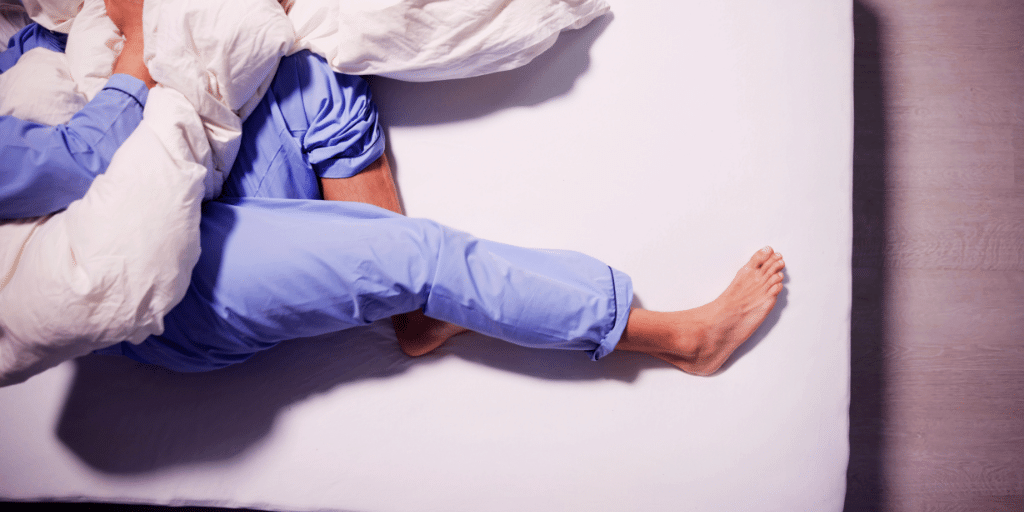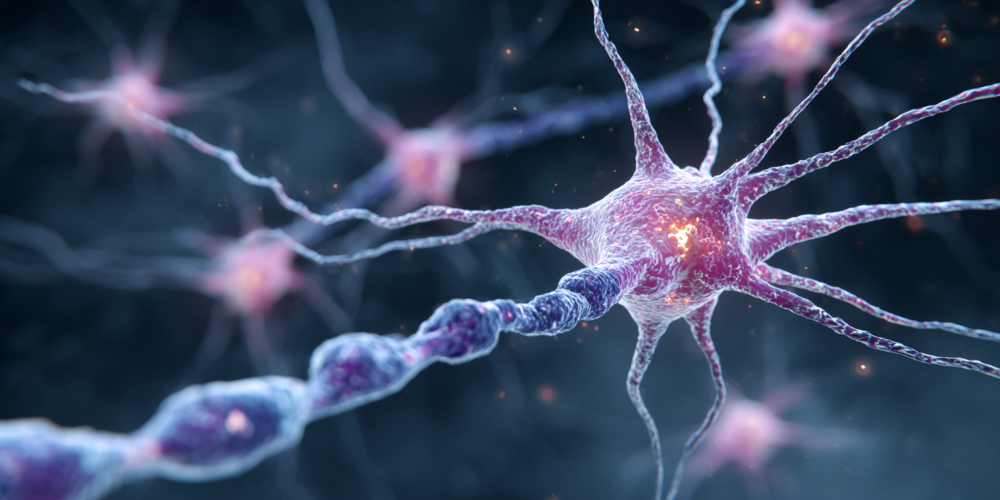
Does the evening, a time meant for relaxation and rest, bring on an almost maddening sensation in your legs? An irresistible, creepy-crawly feeling that makes you want to do anything but lie still? If you find yourself pacing the floors at midnight just to find a moment of relief, you are not alone, and you are not imagining it. You might be one of the millions of people experiencing Restless Leg Syndrome.
Restless Leg Syndrome (RLS), also known by its formal name, Willis-Ekbom disease, is a genuine and often debilitating neurological disorder. It’s not just a case of the “fidgets” or simple anxiety; it’s a complex condition rooted in your brain and nervous system. It can wreak havoc on your sleep, your mood, and your overall quality of life. In this comprehensive guide, we’re going to pull back the curtain on RLS. We’ll explore what it is, how it’s diagnosed, the science behind why it happens, and the wide range of treatments—from medical interventions to lifestyle changes—that can help you finally find some peace.
Key Takeaways
- RLS is a Real Neurological Disorder: It’s characterized by an overwhelming urge to move your legs, usually accompanied by uncomfortable sensations. It’s not just in your head.
- Diagnosis is Symptom-Based: There is no single blood test or scan for RLS. A doctor diagnoses it based on a specific set of five criteria related to your symptoms.
- Iron and Dopamine are Key Players: A major theory behind RLS involves a dysfunction in how your brain uses the neurotransmitter dopamine, which is closely linked to your body’s iron levels.
- Treatment is Highly Individual: What works for one person may not work for another. Effective management often involves a combination of addressing nutritional deficiencies, making lifestyle adjustments, and, in some cases, using prescription medication.
- Don’t Suffer in Silence: If your symptoms are disrupting your life, it is crucial to speak with a healthcare provider. They can provide a proper diagnosis and guide you toward effective treatments.
1. What Exactly IS Restless Leg Syndrome?

So, what does RLS actually feel like? If you have it, you know it’s notoriously difficult to describe. People use a wide variety of words: a crawling, creeping, pulling, throbbing, or itching sensation deep within the legs. It’s not a typical muscle cramp or soreness. The defining feature is the overwhelming, and sometimes uncontrollable, urge to move your legs. Moving them, whether by stretching, walking, or shaking them, provides temporary relief from the unpleasant feeling. The problem is, the moment you stop moving, the sensation often comes right back. This is a neurological disorder where your brain is sending faulty signals to your legs, telling them to move even when you want them to be still.
2. A Brief History: From Willis’s Disease to Modern Understanding
While it might seem like a modern ailment, RLS has been recognized for centuries. It was first formally described way back in 1672 by Sir Thomas Willis, an English physician who was a true pioneer of his time. He was one of the first to describe the sweet taste of urine in diabetics (what was once called Willis’s Disease), the first to map the arteries at the base of the brain (the famous “Circle of Willis”), and even the first to number the 12 cranial nerves—a system we still use today! He described patients with what he called an “unquietness” in their limbs that prevented them from sleeping. The name was later expanded to Willis-Ekbom disease to honor Karl-Axel Ekbom, a Swedish neurologist who, in the 1940s, provided a much more detailed description of the symptoms and distinguished it from other conditions.
3. Are You at Risk? Who Gets RLS?
RLS is surprisingly common, affecting up to 5-10% of the adult population. That means millions of people are dealing with this condition, many of them undiagnosed. It can affect anyone at any age, but it tends to be more common and more severe as people get older. There’s also a significant gender difference, with women being more likely to have it than men. One of the most affected groups is pregnant women, with some studies showing that up to 20% experience RLS. The primary theory for this is that the growing baby requires a significant amount of iron, which can deplete the mother’s iron stores. As we’ll see, iron plays a critical role in this condition.
4. The 5 Official Rules for Diagnosis
Because there isn’t a single lab test that can say, “Yes, you have RLS,” doctors rely on a formalized set of diagnostic criteria. A diagnosis requires that you meet all five of these conditions:
- An Overwhelming Urge to Move: You have a strong, often irresistible urge to move your legs, usually due to uncomfortable or strange sensations.
- Worsens During Rest: The symptoms start or become significantly worse during periods of rest or inactivity, such as when you’re sitting on the couch, on a long flight, or lying in bed.
- Relieved by Movement: The urge and sensations are partially or totally relieved by movement, like walking, stretching, or jiggling your legs. The relief lasts as long as the movement continues.
- Worse in the Evening or at Night: The symptoms are distinctly worse in the evening or at night than they are during the day. For many, the daytime is completely symptom-free.
- Not Caused by Something Else: Your symptoms can’t be solely accounted for by another medical or behavioral condition, such as leg cramps, positional discomfort, arthritis, or bad veins (venous insufficiency).
5. Your Doctor’s Toolkit: How RLS is Investigated
If these criteria sound familiar, your first step should be to talk to your primary care doctor. Since RLS is not always well-understood, you may be referred to a specialist, such as a neurologist or a sleep specialist. To investigate your symptoms, they will likely start with blood tests. The most important one is a test for your iron levels, specifically your ferritin level, which measures your body’s stored iron. You can have low iron stores even if your main blood count (hemoglobin) is normal. They may also check your magnesium levels.
In some cases, your doctor might recommend a sleep study (polysomnogram). While this isn’t used to diagnose RLS itself, it’s used to identify a condition that often accompanies it: Periodic Limb Movements of Sleep (PLMS). This is where your legs twitch or jerk involuntarily during sleep, often every 20-30 seconds. You may be completely unaware of it, but your bed partner certainly isn’t! These movements can disrupt your sleep architecture and contribute to daytime fatigue.
6. The Brain Connection: Why Dopamine and Iron are Crucial

The leading theory behind RLS points to a problem with dopamine, a key neurotransmitter in your brain that helps control muscle movement. Think of dopamine as the traffic controller for your body’s motorways. In RLS, it seems this traffic controller isn’t working correctly, especially in the evening. So, where does iron fit in? Iron is essential for your brain to produce and use dopamine effectively. The receptors that dopamine binds to are dependent on iron. If your brain iron is low—which doesn’t always show up on a standard blood test—your dopamine system can go haywire, leading to the uncontrollable urge to move your legs. This dopamine connection is why some of the medications used to treat Parkinson’s disease, another condition involving dopamine dysfunction, are also used for RLS.
7. Conventional Treatments: Medications That Can Help (and a Word of Caution)
If lifestyle changes aren’t enough, your doctor may discuss medication. The first line of defense is often to correct any deficiencies. If your iron is low, a doctor-supervised course of iron supplementation is essential. You should never take iron willy-nilly, as too much can be toxic. For severe deficiencies, intravenous (IV) iron may be recommended.
For more persistent symptoms, doctors may prescribe dopamine agonist drugs (like pramipexole or ropinirole). These drugs mimic the action of dopamine in the brain and can be very effective. However, they come with a significant caution: over time, a phenomenon called “augmentation” can occur. This is where the medication paradoxically starts making your symptoms worse. Your RLS might start earlier in the day, become more intense, or even spread to your arms. This is a tricky situation that requires carefully reducing the dose under a doctor’s care.
Other medication classes include drugs that affect calcium channels, like gabapentin or pregabalin, which can help calm the overactive nerve signals. In very severe, refractory cases, opioids like tramadol or oxycodone have been used, but given the current opioid crisis, these are reserved as a last resort.
8. Lifestyle and Natural Approaches to Find Relief
Before jumping to prescriptions, there are many lifestyle strategies that can provide significant relief. Good sleep hygiene is paramount. This means creating a consistent sleep schedule, ensuring your bedroom is cool, dark, and quiet, and avoiding caffeine and alcohol, especially in the evening.
Exercise is also key, but there seems to be a “U-shaped curve.” Being too sedentary can make RLS worse, but very strenuous exercise, particularly right before bed, can also trigger symptoms. Moderate, regular activity like walking, swimming, or yoga earlier in the day is often beneficial.
Many people find relief with supplements like magnesium, which plays a role in muscle and nerve function. You can try oral supplements, but some people get better results from Epsom salt (magnesium sulfate) baths or topical magnesium oils and lotions rubbed directly onto the legs before bed.
9. A Personal Story of Relief: Could Diet Be a Factor?
It’s important to remember that RLS is highly individual, and sometimes the solution comes from an unexpected place. One physician shared his personal, decades-long battle with severe RLS. He had tried medications with some success but struggled with side effects and remembering to take them. A few years ago, he and his wife transitioned to a whole-food, plant-based diet. Over time, he realized his debilitating RLS symptoms had almost completely vanished. While this is just one person’s story and not a scientifically proven cure for everyone, it highlights that dietary factors and overall health can play a powerful role in managing symptoms. It’s a hopeful reminder to explore all avenues for relief.
Conclusion
Restless Leg Syndrome is far more than a simple annoyance; it’s a complex neurological condition that can seriously impact your sleep and daily life. The good news is that understanding is growing, and you have many options. From addressing underlying iron deficiencies and optimizing your lifestyle to working with your doctor on targeted medications, relief is possible. You are not alone in this struggle. If you’ve been pacing the floors at night, it’s time to take the first step toward a peaceful night’s sleep. Talk to your doctor, share your symptoms, and remember that you are in charge of your own health.
Source: Dr. Paul Zalzal and Dr. Brad Weening

